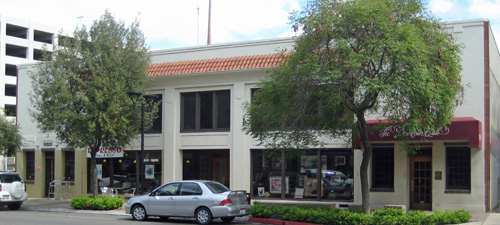Charles E. Butner (1888-1957)
Charles E. Butner was born in Winston-Salem, North Carolina, on July 31, 1888. He completed his education at the University of Pennsylvania in 1911, studying under legendary Beaux-Arts architect and educator Paul Cret. He initially worked in New York at the Russell Sage Foundation, for which architect Grosvenor Atterbury and landscape architect Frederick Law Olmsted, Jr. were then designing Forest Hills Gardens, a socially progressive suburban community.
 In 1914
Butner and his former college classmate Edward Glass
(1886-1954) formed the firm of Glass & Butner in Fresno. The young firm
secured many substantial residential and commercial commissions until World War
I, when Butner joined a U.S. Army Aero Squadron and served in France as a
pilot. Their most significant Fresno commission was the Fresno Republican
Printery building, completed in 1919 (on right).
In 1914
Butner and his former college classmate Edward Glass
(1886-1954) formed the firm of Glass & Butner in Fresno. The young firm
secured many substantial residential and commercial commissions until World War
I, when Butner joined a U.S. Army Aero Squadron and served in France as a
pilot. Their most significant Fresno commission was the Fresno Republican
Printery building, completed in 1919 (on right).
In 1919 Glass & Butner opened a branch office in San Francisco. Winning a design competition for a War Memorial Veterans Building in San Francisco, the two architects saw their grand proposal fall to controversy arising from regional architectural politics. Glass and Butner dissolved their partnership in the early 1920s. Glass remained in San Francisco, Butner in Fresno.
During the early Depression years Butner moved to Salinas. He quickly became a prominent civic leader in Salinas and built a thriving architectural practice in the Monterey Bay Area. Unlike many Beaux-Arts trained architects, Butner adapted well to the Modern Movement as it took hold after World War II. One of his distinctive works from this period was Mel's Drive-In Restaurant, a classic period piece published in 1952. Charles E. Butner managed the firm until his death on June 10, 1957.
©1996 John Edward Powell. All rights reserved.